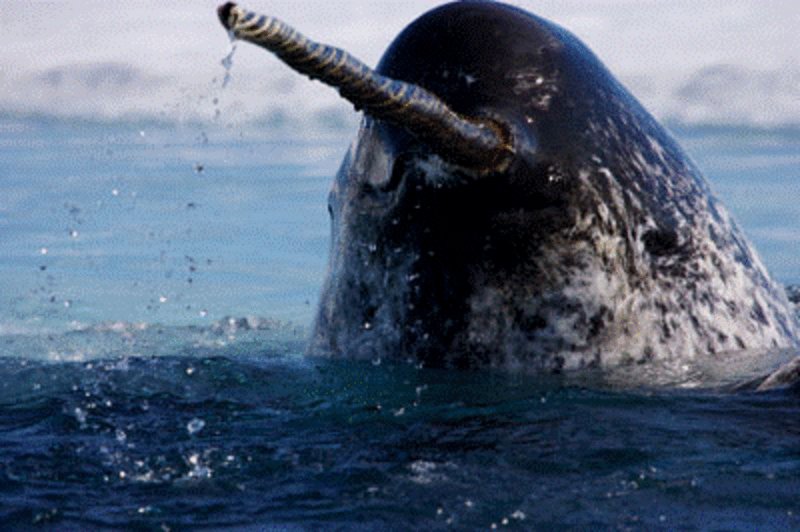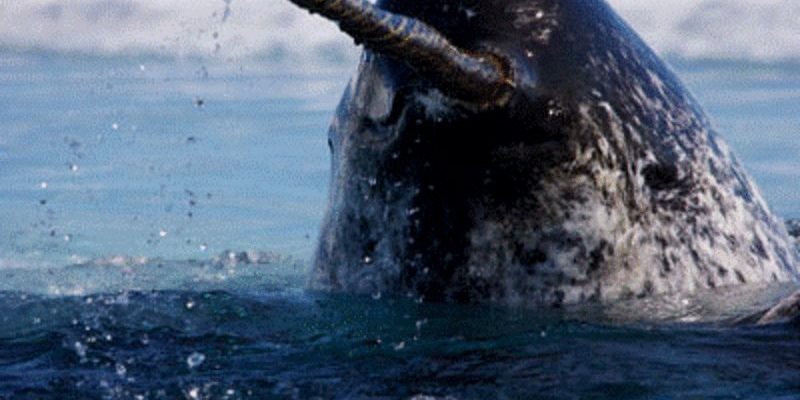
The narwhal is a remarkable marine mammal that has captured the imaginations of people around the world. From its unique physical traits to its fascinating behaviors, there’s a lot to learn about these enigmatic creatures. So, grab a warm drink and let’s dive into the world of narwhals!
1. The Tusks: A Fascinating Feature
The most recognizable feature of the narwhal is, without a doubt, its tusk. This long tooth, which can actually be considered an elongated tooth rather than a horn, extends from the upper jaw. You might be wondering why narwhals have these tusks. Well, it’s believed that they serve multiple purposes.
For one, males use their tusks for social interactions and possibly to establish dominance among peers. Imagine being in a room where everyone has a unique feature that sets them apart—it’s similar to how narwhals might use their tusks to communicate. Studies even suggest that the tusk may have sensory capabilities, helping narwhals detect changes in their environment.
Interestingly, while males typically have a tusk, female narwhals can have one too, although it’s much rarer. This leads to all kinds of questions regarding social structures and mating behaviors among these fascinating creatures.
2. Arctic Dwellers
Narwhals primarily inhabit the Arctic waters, particularly around Greenland, Canada, and Russia. These frigid environments are rich in nutrients, making them an ideal home for narwhals. However, living in such extreme conditions comes with its challenges.
During the summer months, narwhals dive deep to hunt for fish and squid—often reaching depths of over 1,500 meters (about 4,920 feet). That’s deeper than most of us can fathom! Their ability to hold their breath for 25 minutes or longer is nothing short of astounding. It’s like they have superpowers, adapting perfectly to their icy habitat.
3. Unique Vocalizations
If you think narwhals are just silent swimmers, think again! These creatures are known for their complex vocalizations. They communicate through a range of sounds, including clicks, whistles, and even songs. Much like a musician expressing emotions through melody, narwhals use their vocalizations to establish social connections and navigate their environment.
Researchers have found that each narwhal group has its own distinctive “dialect.” It’s almost like being part of a secret club! This complex communication system is vital for their survival, helping them locate one another and coordinate during hunting.
4. Breaching Behavior
You might have seen videos of whales breaching the surface of the water, and narwhals do this too. But did you know that their breaching behavior is not just for show? When narwhals breach, they can propel themselves out of the water and land with a huge splash, creating a spectacle!
This behavior could serve different purposes, like shaking off parasites or simply playing. Honestly, it’s mesmerizing to watch, and it offers insight into the social side of narwhals, showing that they enjoy fun just like us.
5. Diet and Hunting Techniques
Narwhals primarily feed on fish, squid, and shrimp. They are deep divers, using echolocation to find prey in the dark depths of the ocean. Imagine having the ability to see in the dark just by making sounds—that’s how narwhals hunt!
They often hunt in groups, known as pods, where they can help each other locate food. This teamwork is essential, especially when dealing with the cold, challenging waters of the Arctic.
6. Lifespan and Maturity
Narwhals have a long lifespan, often living up to 50 years or more! They typically reach sexual maturity around the age of 5 to 8 years, but they may not start breeding until they’re older. This delayed maturity means that their populations can be affected by changes like climate and hunting pressure.
Interestingly, scientists have found that studying narwhal tusks can reveal their age—like counting the rings of a tree! This research helps us understand more about their life cycles and overall health.
7. Vulnerability and Conservation Status
Despite their charming appearance, narwhals are facing threats that could impact their populations. Climate change is melting their Arctic habitat, leading to habitat loss and changes in prey availability. Additionally, hunting pressures and increased shipping traffic pose significant risks.
Conservation efforts are underway to protect these majestic creatures, including research to better understand their population dynamics and behavior. You might be wondering how you can help—supporting organizations dedicated to marine conservation can make a difference!
8. Myths and Mysteries
Over the years, narwhals have been the subject of various myths and legends. In the past, their tusks were often sold as “unicorn horns,” and people believed they had magical properties. Today, they continue to captivate imaginations, sparking curiosity about the mysteries of the deep.
Exploring these myths not only enriches our understanding of narwhals but also reminds us of the connection between nature and culture. Who knew a creature like the narwhal could inspire so many stories?
9. Social Structures and Behavior
Narwhals are social animals, often seen swimming in groups of 15 to 20, though larger pods can sometimes form. Their social structures can be complex, with distinct roles and behaviors within groups. Just like a tight-knit community, they rely on each other for survival, sharing hunting efforts and protecting one another from predators.
You might be surprised to know that narwhals can even befriend other species. There have been sightings of narwhals swimming alongside beluga whales, showcasing their adaptability and openness to forming connections.
10. Importance in Indigenous Cultures
Narwhals hold cultural significance for many Indigenous peoples in the Arctic. They have been an important resource for food, materials, and tools for centuries. Communities respect these creatures and incorporate them into their cultural narratives.
Understanding the relationship between Indigenous peoples and narwhals highlights the vital role of conservation efforts. It’s a reminder that preserving these creatures goes hand in hand with respecting the traditions and knowledge of those who have lived alongside them for generations.
In conclusion, narwhals are much more than just a sea creature with a long tusk. They are intricate beings that play an essential role in their ecosystem and have captured the hearts and minds of people worldwide. By learning more about them, we can better protect their future and appreciate the wonders of our natural world. So the next time you think about the ocean, remember the narwhal—the unicorn of the sea.

